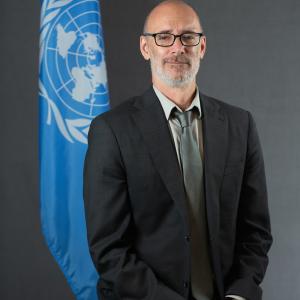Excellency Prime Minister,
Excellencies, Minister of Planning and Cabinet Ministers,
Director Generals,
Director Zahra,
Colleagues.
A sincere word of thanks for the genuine progress that has resulted in today’s event, and a word of congratulations for the extensive work that has gone into this plan, including participation amongst ministries, and levels of Government, States, and local, which has resulted in an integrated, whole of government, and more unified policy approach to one of the most vexing development challenges facing the country.
The displacement crisis in Somalia has become protracted and chronic, with some 20% of the population currently displaced, a good portion of across generation, reflecting the long history of shocks, and of insecurity, which have had a cumulative impact across the country going back decades, but has accelerated in recent years, as a result of the intensifying climate crisis.
What today’s plan represents, is Somalia Turning the Corner, and forging ahead on a new pathway. With new ways of doing business. And delivering new a new generation of hope to its citizens who have been so significantly impacted by this long history of past shocks.
This reflects the broad and positive development trajectory Somalia has demonstrated over recent years, including milestones achieved over the past 12 months such as debt relief, and joining the EAC, and with Somalia’s future development aspirations now being documented in a new National Transformation Plan, and the Country’s Vision 2060.
The crisis of displacement sits at the heart of so many of Somalia’s complex development challenges:
- The elimination of extreme poverty
- Boosting economic growth, productivity, and employment
- Addressing trends of urbanization
- Building resilience to cyclical and intensifying climate shocks
- Breaking through structures of inequality, marginalization and exclusion
- Ensuring that all Somali citizens have full access to their human rights and rights as Somali citizens
These issues cannot be resolved or ameliorated without addressing and providing solutions to internal displacement. As such, I am heartened to see durable solutions being incorporated into the core of Somalia’s development vision, plans, and action agenda; as it likewise will contribute to global commitments such as , including advancing towards the Sustainable development Goals, and the Secretary General’s Action Agenda, as Zhara spoke to.
Now, this work isn’t new. The Government, through the Ministry of Planning, has been leading on durable solutions, very closely with the Federal Member States and local governments, supported by the UN, REDDS, and a number of committed donor partners, for a number of years, demonstrating good practices, approaches that work, and concrete results.
But the point now, with this plan, is that this work has to be brought to scale. We cannot be looking only at tens of thousands, but have to move to hundreds of thousands, and the towards the target of one million.
And this will require new approaches to financing, and partnerships. The cost of the plan might seem daunting. But the cost of not implementing he plan will be even higher. Humanitarian funds, addressing the impacts of crisis and displacement, has averaged over a billion dollars yearly over the past five years. On average, something around half of this amount is directed towards IDP communities.
There is a strong “value for money” argument to be made that refocusing from humanitarian assistance towards development solutions, and investing into the priorities identified in this plan, over the five years will reduce humanitarian needs, and the cost of the humanitarian operations, over the next years, thus reducing dependency, in addition to unlocking potential for productivity and growth gains.
This also requires new and expanded partnerships with IFIs, multilateral development banks, global climate funds, financial institutions, and the private sector, as well as an increased investment from public resources, including Government contributions in terms of allocation of land, and secure tenure, at the Federal, State and local levels.
So, with today’s launch, our immediate collective priority is to rapidly progress expanding financing of this plan, through diversifying partnerships, and to press collectively ahead with its implementation, with all due urgency. The UN will continue to work with you to support the delivery of the Government’s vision and plans.
Again, we congratulate you, and especially the Ministry of Planning and its Durable Solutions team, and stand in solidarity, as Somalia turns this corner, and forges ahead on this new pathway, one which can enable opportunity, hope, dignity, and access to the full human rights, of the most vulnerable members of Somali society.
Thank you very much.














